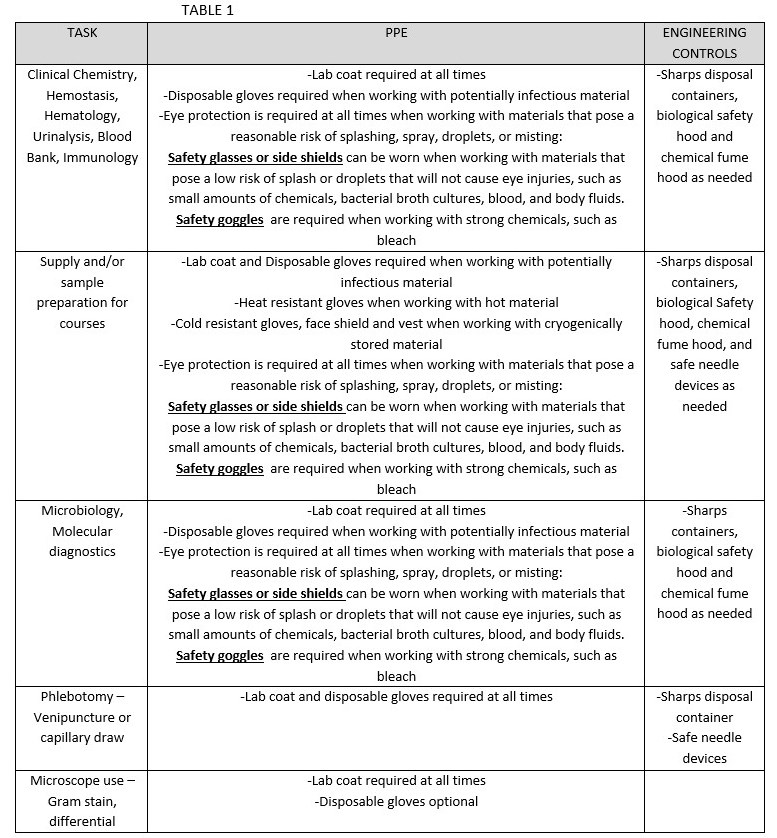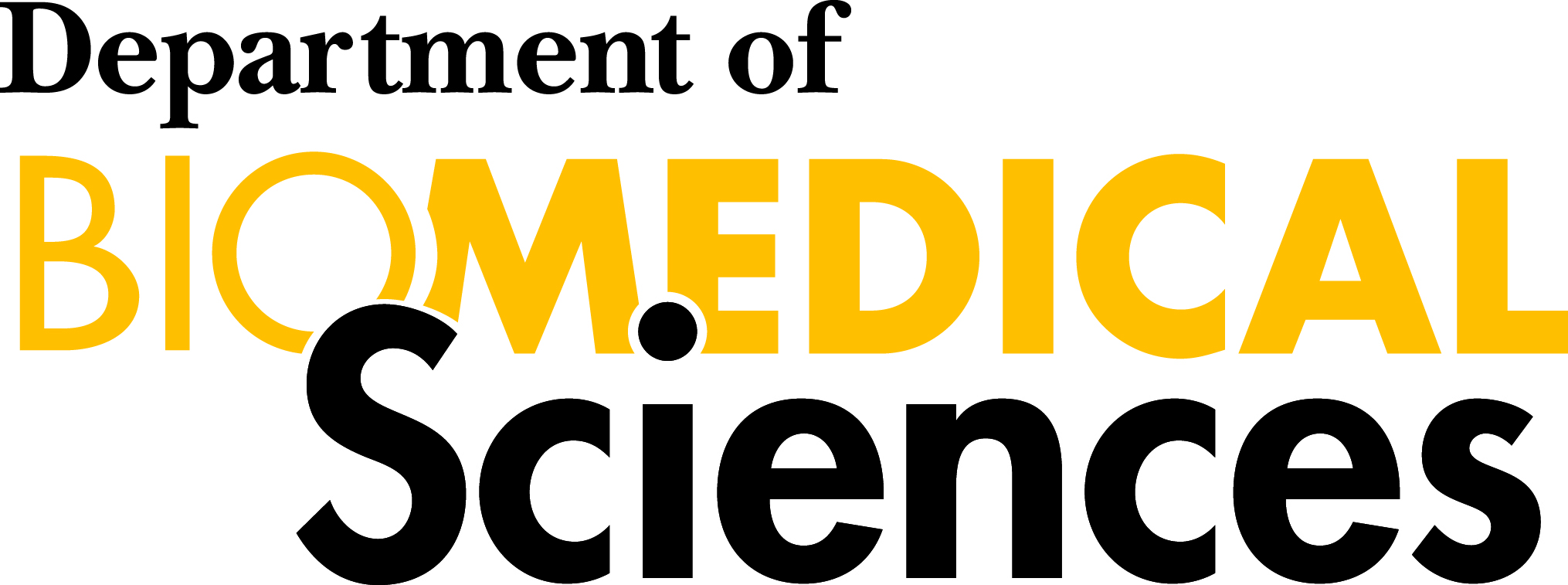Training Certificate/Annual review Form
I. PRINCIPLE
Courses taught in the Biomedical Sciences laboratories may require the use of blood, body fluids, and other biohazardous materials. The purpose of this policy is to provide information on proper personal protective equipment, guidelines on use, and appropriate dress code while working in the BMS labs.
II. SCOPE
This policy applies to all students, non-students, and staff at the University of Wisconsin – Milwaukee that utilize restricted areas in the Department of Biomedical Sciences teaching labs in which there is a reasonable risk of exposure to biohazardous material. Restricted areas containing possible biohazardous material include Enderis Hall B70, B76, B78, B80, B86, B88, and B90.
III. TRAINING
All staff and students that expect to work unsupervised in the BMS teaching labs must review this procedure, complete training by Lab Manager or PI, and fill out the Personal Protective Equipment and Dress Code Training Certificate/Annual Review Form, with a submission type of “Initial Training Certification”. After initial training, procedure must be reviewed annually and documented with the Training Certificate/Annual Review Form, submission type “Annual Procedure Review”.
See BMS 1.0 Utilization of Space and Supplies for guidelines on unsupervised student access to BMS teaching laboratories.
IV. PERSONAL PROTECTIVE EQUIPMENT (PPE) AND UNIVERSAL PRECAUTIONS
A. Personal protective equipment is worn to protect against exposure to hazardous materials. Personal protective equipment used in the BMS labs includes, but is not limited to:
a. Impermeable disposable gloves
b. Fluid resistant Lab coat
. i. Lab coats should be buttoned completely
. ii. Sleeves should never be rolled up
. iii. Lab jackets are allowed, but not recommended due to short length
c. Eye protection (safety glasses, safety goggles, face shield)
d. Masks
B. The practice of universal (standard) precautions is an approach to infection control in which all blood, body fluids, and other potentially infected materials (OPIM) are treated as if known to contain blood borne pathogens such as Human Immunodeficiency Virus (HIV) and Hepatitis B Virus (HBV). This practice is to be observed by all students and staff working in the Department of Biomedical Sciences.
C. Failure of students to follow universal precautions and appropriate PPE guidelines may result in disciplinary action, including dismissal from any course or program in the Department of Biomedical Sciences.
V. POLICY
A. Students and staff must come to lab in appropriate dress to reduce the risk of exposure to infectious material and physical hazards that may exist in the lab. Students and staff should adhere to the following guidelines:
a. Wear close toed shoes that are impermeable to water at ALL TIMES while in the BMS labs.
i. Open toed shoes (sandals, flip flops, etc.) are prohibited and students will not be allowed to work in the labs without proper footwear.
ii. Paper booties are available, but should not be used routinely by staff and students.
iii. Clogs are permissible if they do not have perforations.
b. Avoid wearing chains, bracelets, or other loose hanging jewelry that could get caught on centrifuges, incinerators, and other equipment.
c. Tie long hair back to avoid contact with heat sources, equipment, organisms, and other lab hazards.
d. Clothing must cover the leg down to the toe.
B. All students and staff must use appropriate personal protective equipment (PPE) to prevent exposure while working with potentially infectious materials and other lab hazards. Universal precautions and PPE MUST be used when working with body fluids that are known to transmit blood borne pathogens, which include but are not limited to:
a. Blood and blood products
b. Semen
c. Vaginal secretions
d. Cerebrospinal fluid (CSF)
e. Synovial fluid
f. Pleural fluid
g. Peritoneal fluid
h. Pericardial fluid
i. Amniotic fluid
j. All body fluids which are indistinguishable from those listed above
C. Disposable gloves should never be washed or re-used, i.e. gloves should not be removed and saved for later use.
D. All PPE must be removed prior to leaving the BMS laboratories and/or hallways directly adjacent, i.e. gloves and lab coat should NEVER be worn to the bathroom or while getting a drink from the drinking fountain.
E. A table containing common tasks performed in the laboratory, along with required PPE and engineering controls can be found in Table 1.

VI. REFERENCES
US Department of Labor. OSHA Blood Borne Pathogens Standard. 29CFR 1910.1030
US Department of Labor. Enforcement Procedures for the Occupational Exposure to Bloodborne Pathogens. OSHA Directive Number CPL2-2.44D, effective Nov.27, 2001 [OSHA Office of Health Compliance Assistance, tel. 202-693-2190]
Turgeon, Mary Louise, and Karen Munson Ringsrud. “Safety in the Clinical Laboratory.” Linne & Ringsrud’s Clinical Laboratory Science: The Basics and Routine Techniques. 6th ed. Maryland Heights, MO: Mosby Elsevier, 2012.
VII. POLICY NOTES
A. Universal precautions do not apply to stool samples, nasal secretions, sputum, urine, and vomitus unless visibly contaminated with blood, but should be observed and PPE should be worn when handling these samples.
B. The wearing of gloves is optional when reading plated material in microbiology, but must be worn when handling primary specimens.
VIII. ATTACHMENTS
Personal Protective Equipment and Dress Code Training Certification Log [SAFE 5.0.A] PDF
Reviewed: 8/9/2016, 8/21/2017, 8/10/2018, 8/6/2019, 5/3/2023
